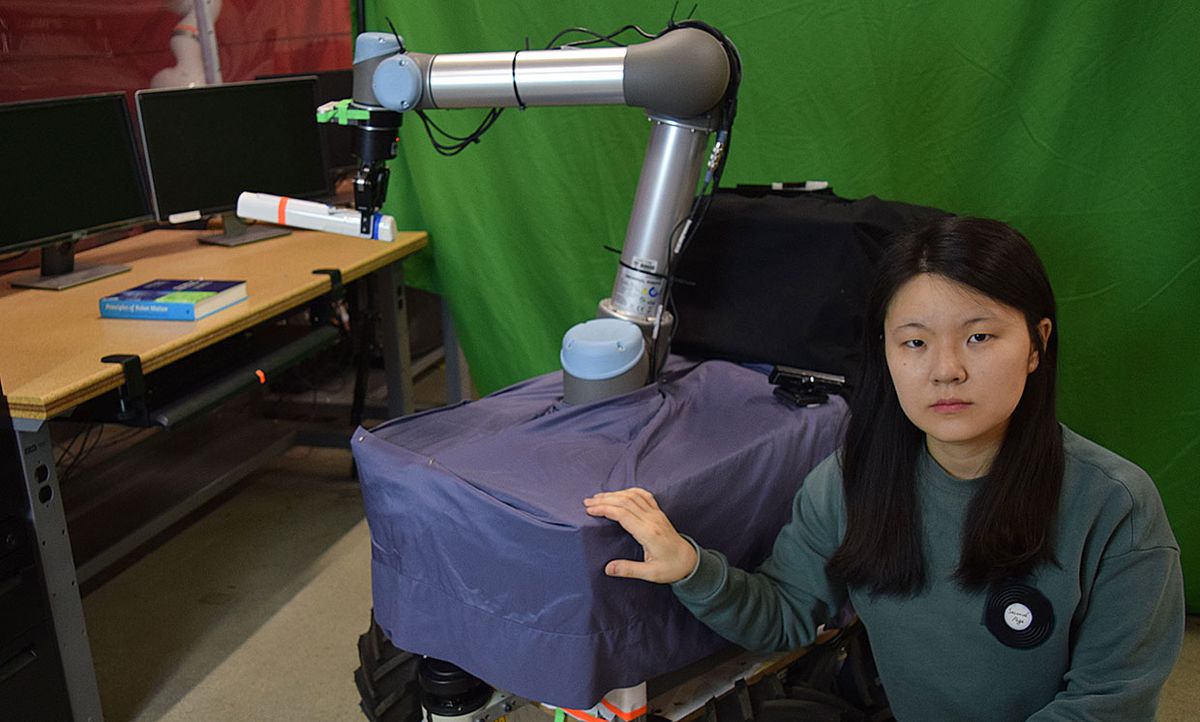THE INSTITUTE Properly disinfecting public spaces can help stop the spread of coronavirus, but cleaning crews are often not properly trained how to do so. Also, if the workers don’t wear personal protective equipment, they are at risk for infection.
IEEE Fellow Satyandra K. Gupta is leading a research team at the University of Southern California’s Viterbi Center for Advanced Manufacturing in Los Angeles that is building a robotic arm that uses a UV light sanitizer to clean contaminated areas.
Gupta is a mechanical engineering professor at the university.
The Institute asked him about the project.
This interview has been edited and condensed for clarity.
What problem are you trying to solve?
In order to thoroughly clean cluttered work spaces, janitorial staff must move items so that all high-touch surfaces can be disinfected. This requires a significant amount of time and effort. It also puts the lives of the workers at risk.
There are a few robots that are used to disinfect areas on the market. However, they do not have the ability to pick up and move objects in their way. Therefore, they cannot effectively clean the surfaces.
We are building a robotic platform to improve human productivity, reduce risk to workers, and ensure that the disinfection process is thorough.
What technologies are you using?
Our semi-autonomous mobile manipulator, Agile Dexterous Autonomous Mobile Manipulation System-UV (ADAMMS-UV), uses a UV light wand mounted on a robotic arm and a UV light source mounted on the base. Using a gripper, the robotic arm can open drawers and closets, and manipulate objects to perform a thorough sanitization of hard-to-reach surfaces.
Explain how your project works.
A human operator—who is located away from the contaminated area—controls ADAMMS-UV from a computer. The operator either provides a goal position for the mobile base to go to or drives it there remotely. Cameras mounted on the robotic arm help the operator navigate the machine. A time-of-flight camera on the robotic arm scans the surroundings and also uses infrared light to determine their depth. With the information the robot collects, it then builds a 3D model of the area.
Using a graphical user interface we developed, the operator then gives the robot instructions about what space to disinfect or what object to move. The robot also computes a sequence of movements for the arm and provides the operator with a preview, who either gives the go-ahead to begin the cleaning process or instructs the robot to discard the motion and try again.
What challenges have you faced and how did you overcome them?
Our biggest challenge was figuring out how to make significant progress developing this technology while also practicing social distancing. Due to the university’s strict requirements, only two people are allowed in the lab at a time. This has made it difficult to coordinate system development and integration of the different modules.
What is the potential impact of the technology?
This technology will help speed up the cleaning process of contaminated areas and dramatically reduce the need for workers to be in close vicinity to the coronavirus.
How close are you to the final product?
We have a prototype and have tested it in the lab. However, it will require further testing and validation to ensure the technology can be used in places such as hospitals, hotels, and offices.
How many people are involved, and how many IEEE members are involved?
There are 10 Ph.D. candidates, master’s degree students, and postdoctoral fellows involved in this project and more than half of the team are IEEE members.
Attention IEEE members: are you part of a team responding to the COVID-19 crisis? We want to hear from you! Wherever you are and whatever you are doing, if you are helping deal with the outbreak in some way, let us know. Send us accounts of anywhere from 200 to 800 words, or simply give us a rough idea of what you are doing and your contact information. Write to: k.pretz@ieee.org



